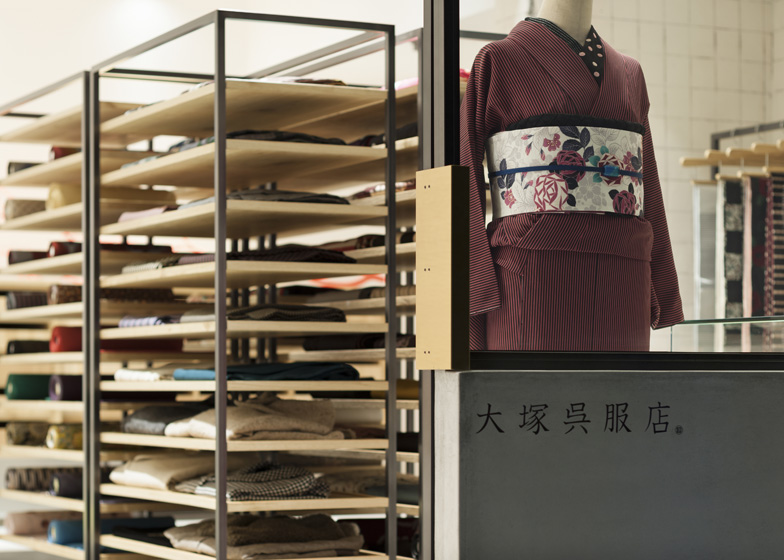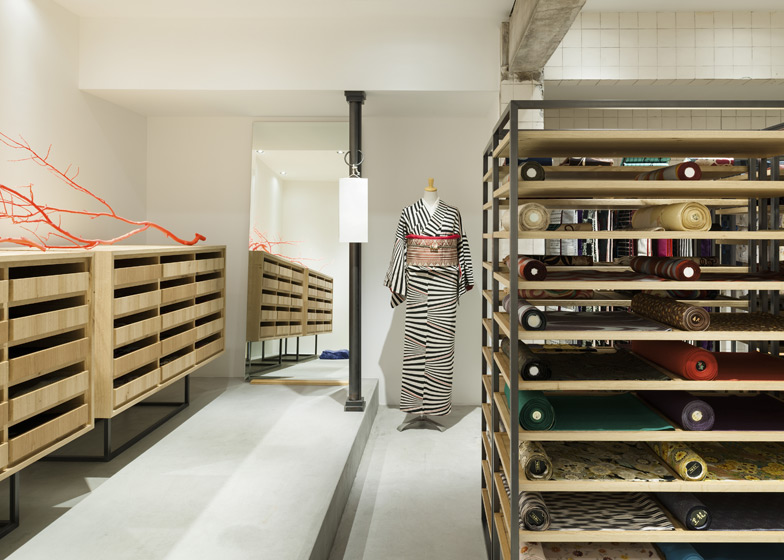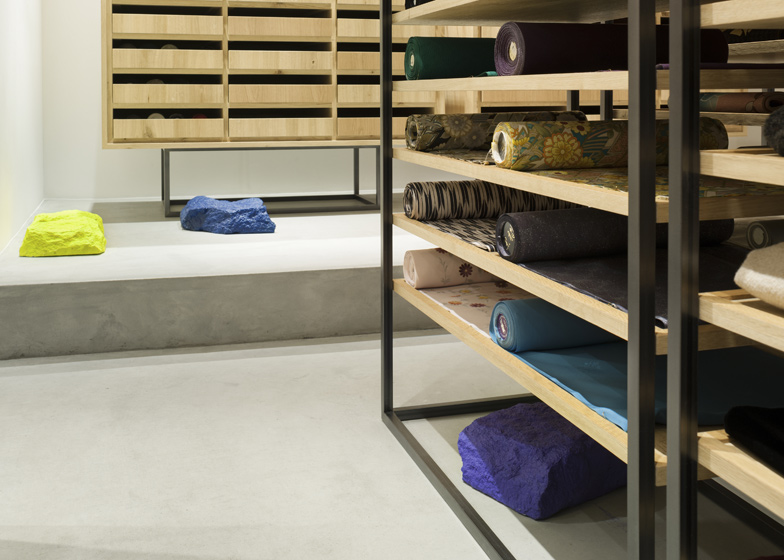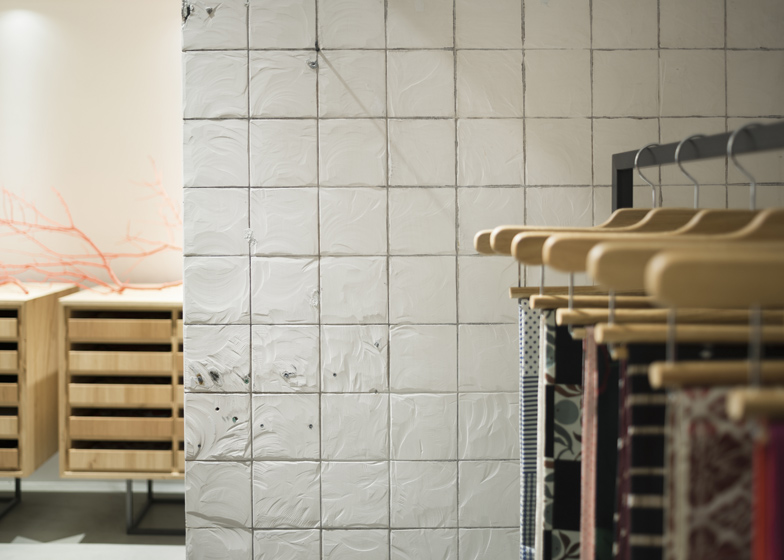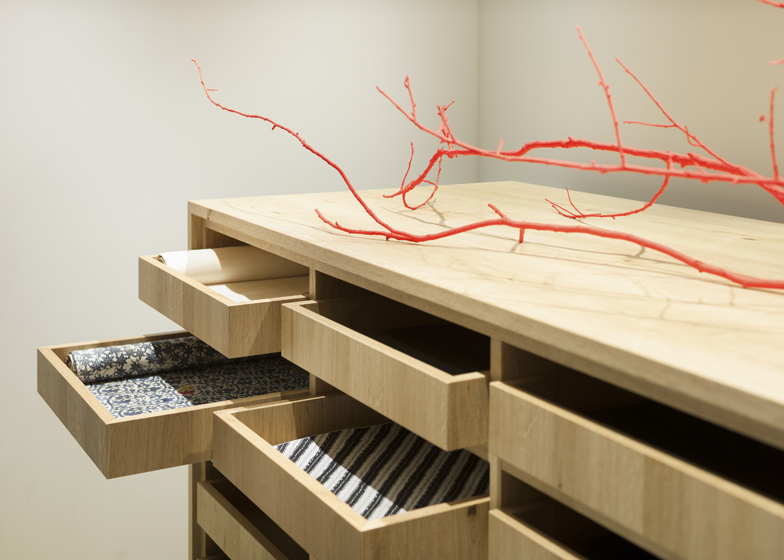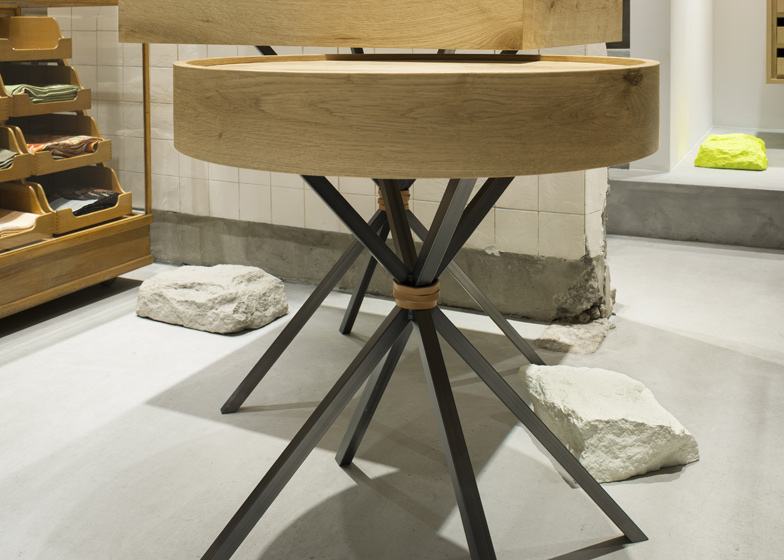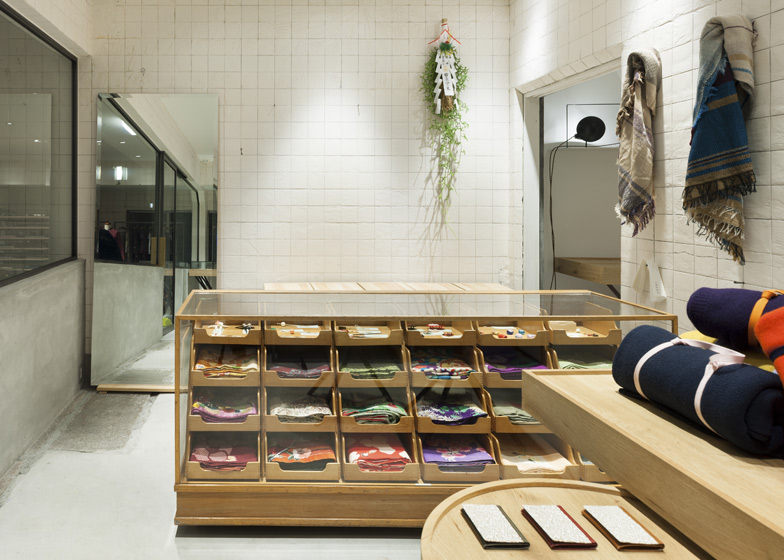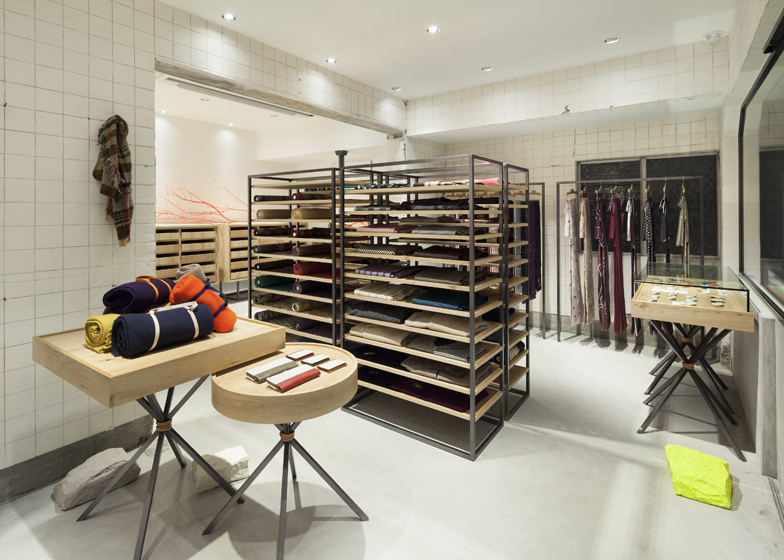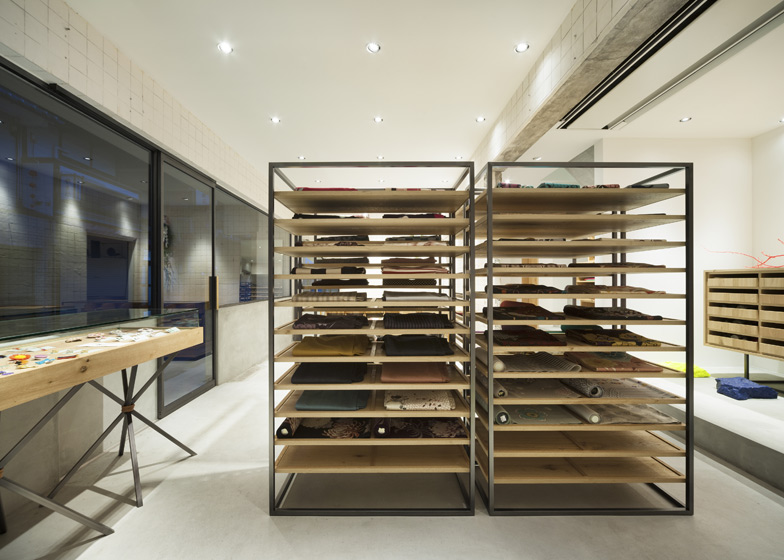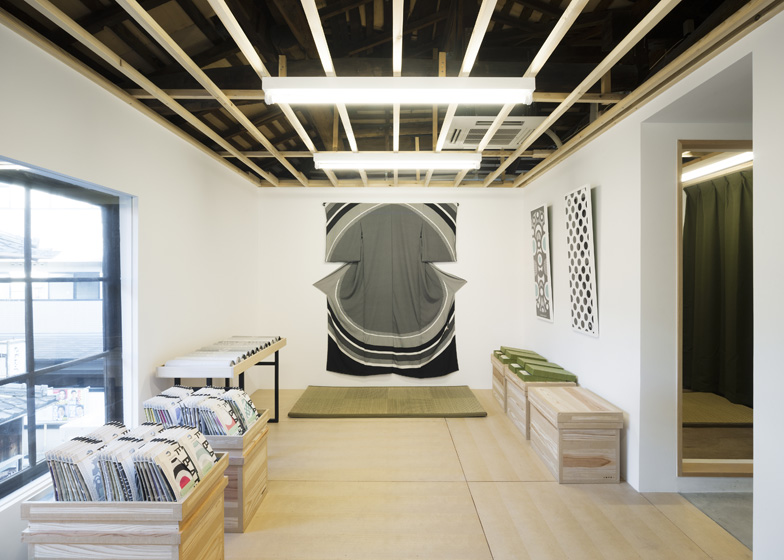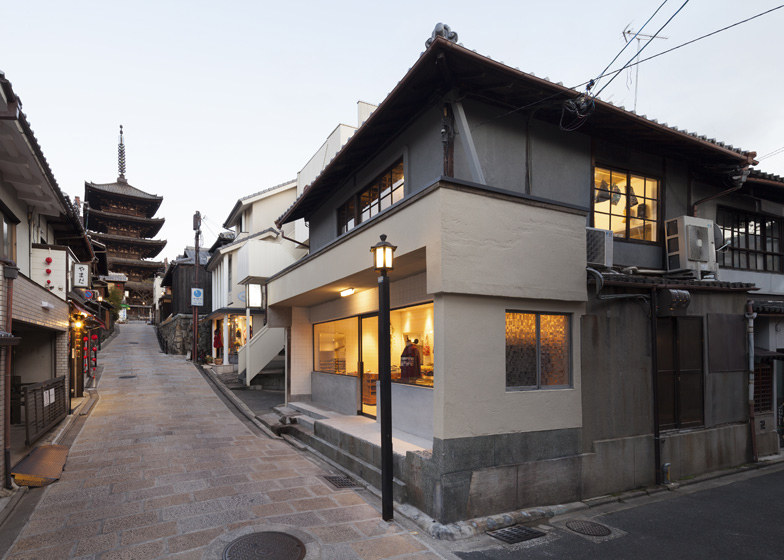Japanese designer Yusuke Seki plans to bring traditional Japanese dress back into fashion with this modern kimono shop in Kyoto (+ slideshow).
The concept for the Otsuka-Gofukuten shop is to simplify the process of having a kimono made-to-measure, encouraging more people to wear the historic robes day-to-day. "Japanese people would wear kimonos in everyday life in bygone eras, nowadays we only wear for special occasions," say the design team.
Yusuke Seki planned the store with three separate displays areas, allowing a clear distinction between different styles and price ranges to make the experience easier for the customer.
Brightly coloured and patterned fabrics are presented on industrial wooden shelves at the centre of the store, while more material is hung from metal frames and some is laid out in wooden drawers.
Ageing ceramic tiles line the walls, serving as a reminder of the 70-year history of the building that was previously used as a tofu retailer. Rather than retaining the smooth surface of these tiles, Seki chose to chisel away at each one to create a similar texture to crumpled fabric.
Accessories are placed on low tables, while painted stones are scattered across the floor. "The main design concept uses aspects from the past and introduces new hand craft towards a new design for the future," say the team.
A concrete staircase leads up to the first floor, where an exhibition area displays a mixture of garments and art.
Yusuke Seki is a Tokyo-based designer who set up his studio in 2008. Since then he's worked on a couple of sweet shops for Papabubble, including one in collaboration with Spanish designer with Jaime Hayon.
Other Japanese shop interiors completed recently include the flagship for fashion brand Takeo Kikuchi and a Starbucks coffee shop designed like a library.
Photography is by Takumi Ota.
Here's a project description from the designer's studio:
Otsuka-Gofukuten - evolution of traditional kimono store in Kyoto.
This building was constructed 70 years ago, and has been a Tofu (Japanese bean curd) store in the past.
Gofuku (another world: Kimono) is a traditional cloth which has varying price, range, qualities, which can sometimes confuse the customer. Even Japanese people would wear Kimonos in everyday life in bygone eras, nowadays we only wear for special occasions, as it has a recent reputation as a garment reserved for high society to wear to special, formal events.
The store purpose is to re-introduce Kimono culture. It has a clear 3-step price system to allow new customers to choose the suitable product, and to compare to other pre-existing traditional kimono stores. On the second floor, it opens up as a gallery space with kimono related modern art and a design works exhibition. The main design concept uses aspects from the past and introduces new hand craft towards a new design for the future.
The interior design consists of 3 types of showcases according to the price range, frame and type of composite of Kimono. The other kimono products are displayed on original designed shelves with knotted feet. The design method explores diachronic aspects such as materials, stories, location, architecture and function to translate and add value through design approach.
The white tiles are from original Tofu store. The walls in all directions are covered by white tiles Yusuke has curved to add new textures, which give the appearance of new surfaces from the layered inside material. This process makes the accurate grid become more characteristic and organic like a hand drawing. The coloured stones are incorporated under the floor, and original old fashion glasses are fixed into the windows to demonstrate the history of the building.
All the aspects have a story and contribute to the overall store details. They take on a new life, having been a relic of the past - mirroring the theme of this new approach to Kimono design and wear.
Above: original building before renovation

